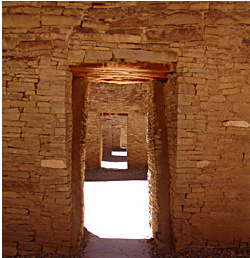Publication Date
8-1-2023
Abstract
The historical record of Indigenous North America at the time of European colonization attests to the presence of borderlands between competing culture cores. Yet, the oftentimes inability of the archaeological record to speak to the presence of such dynamics in the past remains a hinderance to understanding how past peoples engaged with one another in noncolonial settings as well as how these interactions resulted in ethnogenesis or the establishment of new culture cores. This dissertation uses a comparative analysis of settlement layout, architecture traits, ceramic artifacts, and mortuary practices to examine how individuals who resided in the space between two late prehispanic entities, Salado and Casas Grandes, engaged with and modified both. Results demonstrate that sites in the International Four Corners area diverge in many ways from existing interpretations, and I interpret them to indicate the presence of a likely multi-ethnic borderlands. Consequently, this dissertation sets a new baseline for archaeological research in this area, yet also enables more profound understandings of late prehispanic dynamics in the southern American Southwest/Mexican Northwest region.
Keywords
Southwest archaeology, ceramic analysis, borderlands, architectural analysis, mortuary practices
Project Sponsors
National Science Foundation
Document Type
Dissertation
Language
English
Degree Name
Anthropology
Level of Degree
Doctoral
Department Name
Anthropology
First Committee Member (Chair)
Emily Lena Jones
Second Committee Member
Frances M. Hayashida
Third Committee Member
Hannah V. Mattson
Fourth Committee Member
Samuel Truett
Fifth Committee Member
Patricia A. Gilman
Sixth Committee Member
Paul E. Minnis
Recommended Citation
Seltzer-Rogers, Thatcher Andrew. "Between Casas Grandes and Salado: Community Formation and Interaction in the Borderlands of the American Southwest/Mexican Northwest Region, AD 1200-1450." (2023). https://digitalrepository.unm.edu/anth_etds/214

